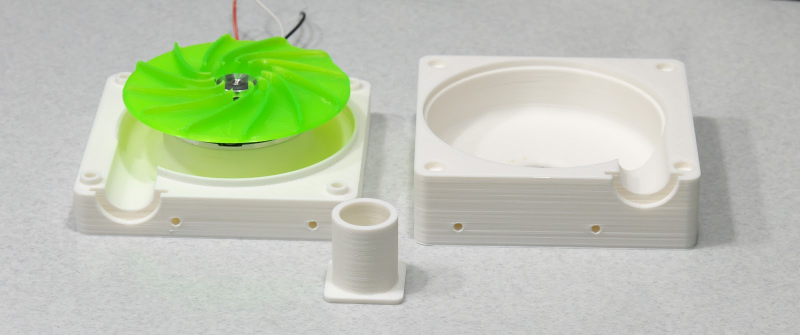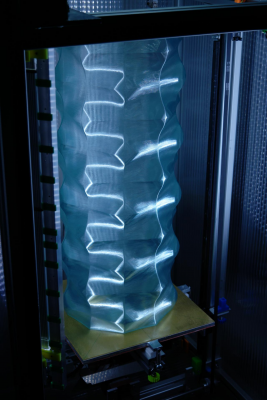What is practical limit of layer shifting at all?
Posted by karabas
|
What is practical limit of layer shifting at all? January 11, 2021 09:08AM |
Registered: 12 years ago Posts: 227 |
I printed on different printers and all of them show random bands on model walls, good seen in reflecting light, but less (or not) noticeble in direct view.
I want to minimize post sanding of models. So I wonder what is that possible to low down layer shifting and how low.
will stepper encoders like MKS42 help?
I print 0.15layer and lower.
Edited 1 time(s). Last edit at 01/11/2021 09:11AM by karabas.
I want to minimize post sanding of models. So I wonder what is that possible to low down layer shifting and how low.
will stepper encoders like MKS42 help?
I print 0.15layer and lower.
Edited 1 time(s). Last edit at 01/11/2021 09:11AM by karabas.
|
Re: What is practical limit of layer shifting at all? January 11, 2021 05:41PM |
Registered: 6 years ago Posts: 1,863 |
My Opinion
If you are using lead screws for the Z-Axis if the lead screw is not perfectly center any coupler you will get layer shifting lines.
I wrap at least one layer of electricians tape on lead screw before installing the coupler. Then cut tape extruding from coupler off an remove.
Computer Programmer / Electronics Technician
If you are using lead screws for the Z-Axis if the lead screw is not perfectly center any coupler you will get layer shifting lines.
I wrap at least one layer of electricians tape on lead screw before installing the coupler. Then cut tape extruding from coupler off an remove.
Computer Programmer / Electronics Technician
|
Re: What is practical limit of layer shifting at all? January 12, 2021 01:39AM |
Registered: 12 years ago Posts: 227 |
|
Re: What is practical limit of layer shifting at all? January 12, 2021 07:24AM |
Registered: 10 years ago Posts: 239 |
I have spent some time working on this issue and theorize and/or have proven there are several factors at play but to summarize it's not just an issue with the mechanics. The way the plastic is extruded and its effect on the outer perimeter are big contributers along with the printing environment. At my work we have high $ FDM machines that will print a nearly perfect vertical surface with Ultem or anything else. Dialing in extrusion (no over extrusion), layer height to nozzle diameter relationship, effects of infill geometry/density layer-layer and a stable temperature in the chamber are just some elements that effect vertical quality.
|
Re: What is practical limit of layer shifting at all? January 12, 2021 07:42AM |
Registered: 11 years ago Posts: 5,780 |
If your printer is made well- low or no backlash in the mechanism and the Z axis works without wobble- when you print a single walled vase you'll see the layers stacking up perfectly. As soon as you change to multiple walls, the problems start. As Mr. Clark says, the rough vertical walls are a problem of extrusion, geometry, properties of the plastic (shrinkage, etc.) etc., not necessarily a printer build or adjustment problem.
Sometimes I get stuff like this out of UMMD:
It's not pretty, but it's functional.
I also get stuff like this:
600 mm tall, single walled, 1.2 mm wide lines, 0.6mm layers, printed in <9 hours. The layer registration is as good at the top as it is at the bottom.
Edited 1 time(s). Last edit at 01/12/2021 07:51AM by the_digital_dentist.
Ultra MegaMax Dominator 3D printer: [drmrehorst.blogspot.com]
Sometimes I get stuff like this out of UMMD:
It's not pretty, but it's functional.
I also get stuff like this:
600 mm tall, single walled, 1.2 mm wide lines, 0.6mm layers, printed in <9 hours. The layer registration is as good at the top as it is at the bottom.
Edited 1 time(s). Last edit at 01/12/2021 07:51AM by the_digital_dentist.
Ultra MegaMax Dominator 3D printer: [drmrehorst.blogspot.com]
|
Re: What is practical limit of layer shifting at all? January 13, 2021 07:58AM |
Registered: 12 years ago Posts: 227 |
Yes that's what I am about. But! Take your perfect print and change the angle of light and you see unperfect picture similar to your white model wall.Quote
when you print a single walled vase you'll see the layers stacking up perfectly.
I think its about 5-8 microns shift (or maybe layer thinkness inconsistness). I remebered Nophead tested minimum side wall text thickness and you can still see 8 microns thickness.
Make a test. Extrude a text from side wall. print. minimize extrusion until you cannot see it.
So the question is how perfect you can print flat vertical wall. And what you need to change in your printer to reach it.
I print saxophone mouthpieces. I need postsmoothing layers but I wont to change rail curve. It must remain as modelled for repeatability.
Edited 3 time(s). Last edit at 01/13/2021 08:03AM by karabas.
|
Re: What is practical limit of layer shifting at all? January 13, 2021 11:23AM |
Registered: 11 years ago Posts: 5,780 |
Flat vertical walls are a particular problem, even in single walled vases because plastic shrinkage easily distorts the shape and causes the straight wall to "potato chip". Curved walls usually suffer less of that problem.
Ultra MegaMax Dominator 3D printer: [drmrehorst.blogspot.com]
Ultra MegaMax Dominator 3D printer: [drmrehorst.blogspot.com]
|
Re: What is practical limit of layer shifting at all? February 18, 2021 09:31PM |
Registered: 10 years ago Posts: 239 |
I've been working on a new extruder design for 1 of my printers with 120c chamber hoping for more precise control. 30mm from dual drive to nozzle tip and water cooled with this CF/PEKK (260c max use temp) obsessing over print quality and accuracy. This stuff is a far cry from PLA when it comes to ease of printing but not bad for a bad ass polymer and with the light just right you can see the layer mismatch just like unfilled filament, maybe even more so.
I have made each part at least 15 times, just burning high dollar filament ($700/kilo) trying combination after combination of settings. The single biggest improvement to vertical wall consistancy is outer perimeter equaling nozzle diameter using 2 perimeters. This is after making sure my filament consumption is within 1% of the calculated value (measuring actual filament used) generated by Prusaslicer 2.3. My extrusion multiplier is .82. Still not perfect but my obsessiveness has subsided so pretty good I guess.
I have made each part at least 15 times, just burning high dollar filament ($700/kilo) trying combination after combination of settings. The single biggest improvement to vertical wall consistancy is outer perimeter equaling nozzle diameter using 2 perimeters. This is after making sure my filament consumption is within 1% of the calculated value (measuring actual filament used) generated by Prusaslicer 2.3. My extrusion multiplier is .82. Still not perfect but my obsessiveness has subsided so pretty good I guess.
Sorry, only registered users may post in this forum.

